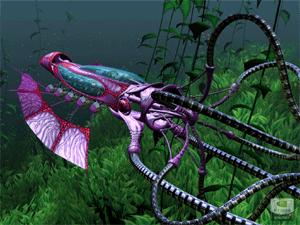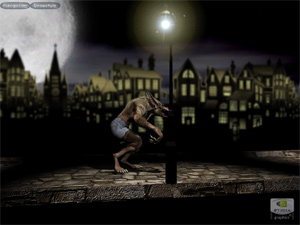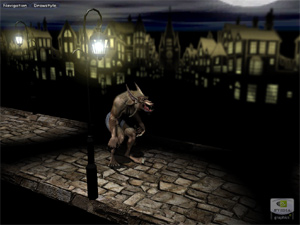
 |

|
| ActiveWin: Reviews | Active Network | New Reviews | Old Reviews | Interviews |Mailing List | Forums |
|
|
|
|
|
DirectX |
|
ActiveMac |
|
Downloads |
|
Forums |
|
Interviews |
|
News |
|
MS Games & Hardware |
|
Reviews |
|
Support Center |
|
Windows 2000 |
|
Windows Me |
|
Windows Server 2003 |
|
Windows Vista |
|
Windows XP |
|
|
|
|
|
|
|
News Centers |
|
Windows/Microsoft |
|
DVD |
|
Apple/Mac |
|
Xbox |
|
News Search |
|
|
|
|
|
|
|
ActiveXBox |
|
Xbox News |
|
Box Shots |
|
Inside The Xbox |
|
Released Titles |
|
Announced Titles |
|
Screenshots/Videos |
|
History Of The Xbox |
|
Links |
|
Forum |
|
FAQ |
|
|
|
|
|
|
|
Windows XP |
|
Introduction |
|
System Requirements |
|
Home Features |
|
Pro Features |
|
Upgrade Checklists |
|
History |
|
FAQ |
|
Links |
|
TopTechTips |
|
|
|
|
|
|
|
FAQ's |
|
Windows Vista |
|
Windows 98/98 SE |
|
Windows 2000 |
|
Windows Me |
|
Windows Server 2002 |
|
Windows "Whistler" XP |
|
Windows CE |
|
Internet Explorer 6 |
|
Internet Explorer 5 |
|
Xbox |
|
Xbox 360 |
|
DirectX |
|
DVD's |
|
|
|
|
|
|
|
TopTechTips |
|
Registry Tips |
|
Windows 95/98 |
|
Windows 2000 |
|
Internet Explorer 5 |
|
Program Tips |
|
Easter Eggs |
|
Hardware |
|
DVD |
|
|
|
|
|
|
|
ActiveDVD |
|
DVD News |
|
DVD Forum |
|
Glossary |
|
Tips |
|
Articles |
|
Reviews |
|
News Archive |
|
Links |
|
Drivers |
|
|
|
|
|
|
|
Latest Reviews |
|
Xbox/Games |
|
Fallout 3 |
|
|
|
Applications |
|
Windows Server 2008 R2 |
|
Windows 7 |
|
|
|
Hardware |
|
iPod Touch 32GB |
|
|
|
|
|
|
|
Latest Interviews |
|
Steve Ballmer |
|
Jim Allchin |
|
|
|
|
|
|
|
Site News/Info |
|
About This Site |
|
Affiliates |
|
Contact Us |
|
Default Home Page |
|
Link To Us |
|
Links |
|
News Archive |
|
Site Search |
|
Awards |
|
|
|
|
|
|
|
Credits |

|
Product: GeForce 4 Ti 4600 Company: NVIDIA Website: http://www.nvidia.com Estimated Street Price: $399.99 Review By: Julien Jay |
GeForce 4 Technology Explanation
LossLess Z Compression
| Table Of Contents |
| 1:
Introduction 2: GeForce4 Ti 4600 Technology Explanation 3: GeForce 4 Ti 4600 Technology Explanation 2 4: GeForce 4 Ti 4600 Technology Explanation 3 5: nView 6: Direct 3D Benchmarks 7: OpenGL Benchmarks 8: Conclusion |
 Already
included in the GeForce
Already
included in the GeForce
Z Occlusion Culling
Just like old PowerVR chips from NEC or the Kyro
nFinite FX II
Like its predecessor, the GeForce
If vertex
and pixel shaders mean nothing to you here is a description of what they
are. A vertex is the corner of the triangle where two edges meet, and thus
every triangle is composed of three vertices. A vertex usually carries
information like its coordinates, weight, normal, color, texture
coordinates, fog and point size data. A Shader is a small program that
executes mathematical operations to alter data so a new vertex emerges with
a different color, different textures, or a different position in space.
Vertex Shaders are run by the GPU (so it doesn't consume CPU horsepower) to
act on triangles’ top (vertices: it concerns every polygon shape) associated
data for the Vertex Shaders or on the pixels for the Pixels Shaders. Now
let's see the Pixel Shaders. If every
Then a
combiner adds specular lighting & fog effects to make the pixel
alpha-blended, defining its opacity. With


NVIDIA Demos using the dual
vertex shader (click to enlarge)
With
nFinite FX II, NVIDIA has enhanced and tweaked existing pixel and vertex
shaders. The GeForce
NVIDIA’s
latest GPU includes a brand new supplementary pipeline dedicated to the
Vertex Shaders. Including two multi threaded Vertex Shaders pipelines in a
chip isn’t new, since the NV
NVIDIA WolfMan
Those new Vertex Shaders can be used to render incredible fussy effects as shown by the Wolfman demo from NVIDIA. The NVIDIA GeForce4 GPU family and nfiniteFX II engine represents the first time that realistic fur with per-pixel lighting can be applied to a highly complex animated character and run at high frame rates. The nfiniteFX II engine.s dual vertex shaders are able drive more than 100 million vertices per second. This power is needed as the Wolfman contains over 100,000 polygons. The Wolfman uses eight concentric fur shells. The color and density of the fur is controlled using a separate texture map that covers the entire body, which gives the fur its distinct look, rather than a uniform pattern. The nfiniteFX II engine's advanced pixel shader support for 3 and 4 textures accelerates this type of rendering. The Wolfman is not a mere static model. Rather, it is a completely skinned animation. This Wolfman contains a 61-bone skeleton. The complexity of this model is on par with that used in television and film special effects production. Each and every vertex of the skin, fur layers, and fin geometry are deformed in real-time to match the movement of the underlying skeleton. The complexity of this task is amazing, as the nfiniteFX II engine needs to handle these vertex deformations for each of the eight layers. One of the unique properties of stranded material such as hair and fur is that it reflects light more in some directions than others. This is known as .anisotropic. lighting, and is computationally expensive to reproduce. The nfiniteFX II engine has advanced pixel shaders that help the GeForce4 GPUs deliver 50% more performance than the GeForce3. These improvements allow the GPUs to deliver anisotropic lighting to the Wolfman while maintaining fast frame rates. Individual strands of hair and patches of fur react based on the position and the intensity of the light and the angle that the light strikes the fur.


Wolfman Demo (click to enlarge
if you're not scared to death ;))
